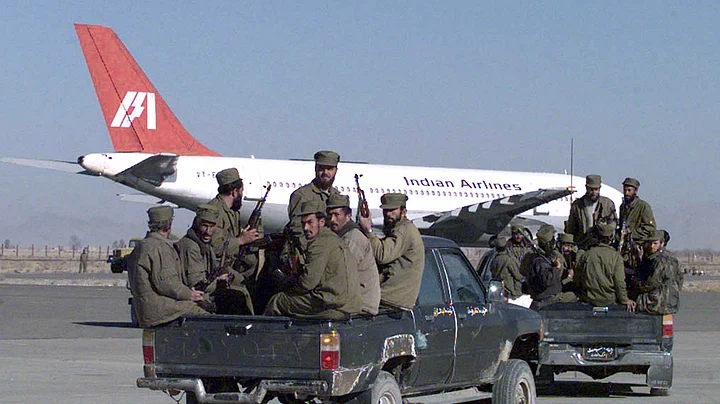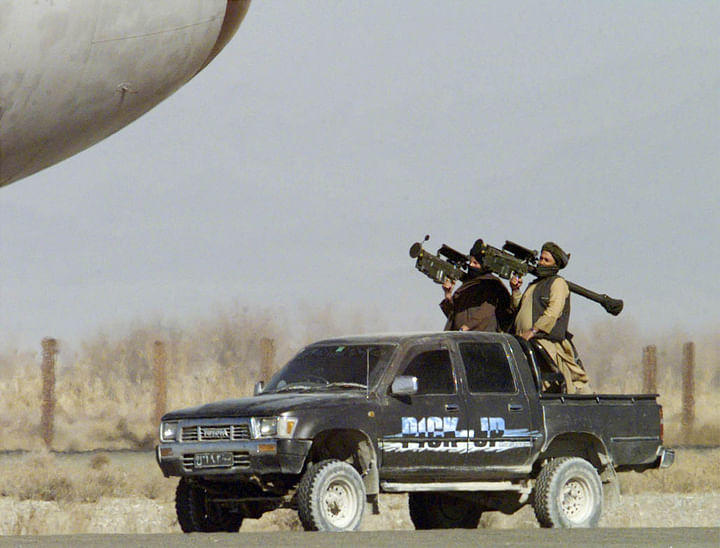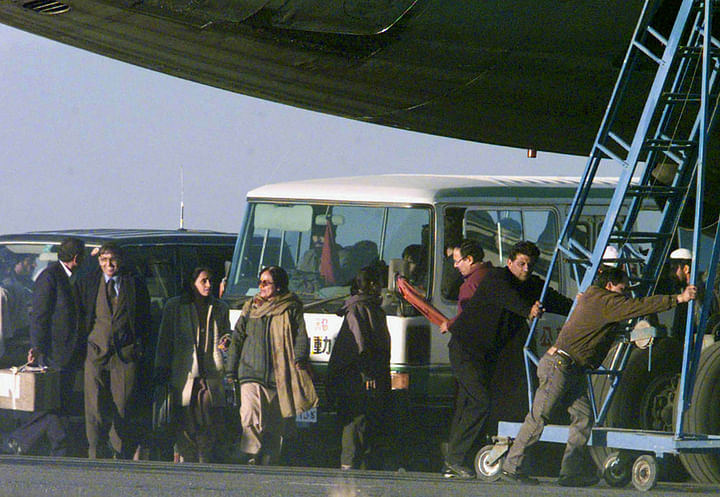Here’s something nobody knew about the Kandahar hijacking – an Indian RAW officer was aboard IC-814.

176 passengers and 15 crew members on board Air India flight IC-814 were taken hostage by the militants of Harkat-ul-Mujahideen exactly 21 years ago. But here’s something nobody knew about the Kandahar hijacking – an Indian RAW officer was aboard the IC-814. This article was first published on 4 July 2015 and has been reposted from The Quint’s archives to mark the day IC-814 was hijacked.)
While the entire security and political establishment “goofed up” in their response to prevent the hijack of Indian Airlines flight IC-814 in the winter of 1999, there was one small success for which Research and Analysis Wing, headed at that time by tall, lanky and handsome AS Dulat, could take due credit.
A RAW officer posted under cover in the Indian mission in Kathmandu at that time, a West Bengal cadre IPS officer of the 1986 batch, whose identity I will not disclose because he continues to work for India’s external intelligence agency, was on the very plane that was seized in the skies after it took off from Tribhuvan International Airport on Christmas Eve, 25 years ago.
RAW Secret Out Now
→ RAW officer who was one of the passengers on the plane is a 1986-batch IPS officer from the West Bengal cadre | |
→ He was posted in Nepal under diplomatic cover | |
→ The hijackers had no clue the officer was on board the plane | |
• The then NDA government’s ‘goof-ups’ were legion | |
→ Top national security bosses and political leadership crumbled like cookies | |
→ In Kandahar, four-member Indian team of MEA and intelligence officers, Including Ajit Doval, negotiated the modalities of the passengers-terrorists swap |
The Pakistan ISI-backed hijackers who took control of the aircraft with 160 passengers and crew members had no knowledge of the RAW officer’s presence. He was seated somewhere in the middle of the aircraft and did nothing that would give away his identity. And he suffered as much as the passengers in the course of the five-day ordeal which ended shamefully for the then NDA government headed by Atal Bihari Vajpayee.
I worked for Calcutta-based The Telegraph newspaper’s Delhi Bureau at the time and had written a story in which I intentionally buried this sensational piece of information. I had bowdlerised the information sufficiently so that the RAW officer’s cover was not blown. While reporting objectively on the Kandahar hijack, which ended with the Vajpayee government bowing to the hijackers’ demand and releasing five hardcore terrorists, including the corpulent Masood Azhar of the Jaish-e-Mohammad outfit, I filed several “breaking stories” related to the event. The home ministry was my “beat.”
RAW Failed in Nepal
When Dulat now says that the government and its intelligence agencies goofed up, he cannot exculpate the organisation he led then. The RAW had heft in Nepal and had a large station in Kathmandu. Its operatives and network of agents had no clue of the hijack operation, one of the most daring in recent times, which was executed with precision – almost a reminder of the manner in which the 11 September hijackers escaped detection across airports in the US prior to targeting New York and Washington DC.

It was around 4:15 pm on 24 December 1999. I was sitting in the expansive room occupied by the then Deputy Prime Minister L K Advani’s private secretary Deepak Chopra. Suddenly the red RAX (restricted area exchange) telephone on his desk rang. Chopra took the call and in a matter of seconds his face turned ashen. The caller was Intelligence Bureau Director Shyamal Datta.
“What is it?” I asked Chopra who shot out of his chair to go into Advani’s teak-panelled room. “There’s been a hijack,” is all Chopra mumbled before entering Advani’s large chamber. Meanwhile, a grave-looking Datta walked briskly into the Deputy PM’s room. Within hours hell broke loose as news that flight IC-814 had been hijacked streamed on TV news channels which were few in 1999.
Government Paralysis
The government had been struck by paralysis. Not one of the leading worthies in the security establishment – National Security Advisor Brajesh Mishra, Datta, Dulat – could take a decision to immobilise the aircraft when it landed at Amritsar Raja Sansi Airport on 25 December evening. These men had suddenly developed feet of clay. Even ‘Iron Man’ Advani had gone silent. The political leadership and the national security bureaucracy’s main concern of course was that no action that could put the passengers in harm should be taken.
But the litany of goof-ups continued the next day when the CMG met at Rajiv Gandhi Bhavan at Safdarjung Airport. Differences cropped up when Mishra joined the meeting of men with grim faces and furrowed brows. What was inexplicable was the presence of top IAS officers on the CMG. What understanding did they have of a security response to the hijack? But it was the manner in which Mishra bossed about in the meeting on 26 December 1999, which peeved Advani.
Clearly annoyed, the Deputy PM, who was attired in a brown bandhgala suit and black leather shoes, left the meeting, unable to look into the eyes of the waiting reporters. Into the third day of the hijack, by which time the plane had been commandeered out of Indian skies and had been parked at Kandahar’s desolate airport, with the Taliban covering the hijackers, the Cabinet itself was clearly divided. Advani, who had sought a strong response – not to give-in to the hijackers’ initial several demands and not to release the terrorists – was isolated as Vajpayee and his NSA acquiesced.
Even the then External Affairs Minister Jaswant Singh half-heartedly agreed to the passenger-terrorist swap.

The man who conducted the negotiations with the hijackers was none other than Ajit Doval, who was an Intelligence Bureau Special Director overseeing special operations at that time. By the time it was clear that the hijackers had the full backing of the Taliban, a team of senior officers led by MEA Joint Secretary Vivek Katju, two RAW officers C D Sahay (who would later become the chief) and Anand Arni and Doval flew out to Kandahar to carry out further negotiations with the Taliban and the hijackers. The negotiations primarily centred round the modalities of the release of the passengers.

Once the passengers were put on board a special aircraft that flew them back to Delhi, Sahay and Arni escorted their harrowed colleague out of Kandahar on another plane.